Tree of heaven — a short introduction to this piece.
There are a lot of plants and trees that can cause problems – but few are as troublesome, as damaging – and as dangerous as the Tree of Heaven.
The fast-growing and extremely invasive tree may have a pleasant name, but there is nothing heavenly about what it does to the landscape around it. In fact, Tree of Heaven is one of the most harmful trees you can have on your property.
At our farm, we have seen firsthand just how big of an issue this invasive tree can become. When we first purchased the land, Tree of Heaven was growing everywhere. It lined fence rows, popped up in our fields, and sprouted right along the edges of our woods. We also had upwards of 20 mature Tree of Heaven’s that soared above 60 feet tall!
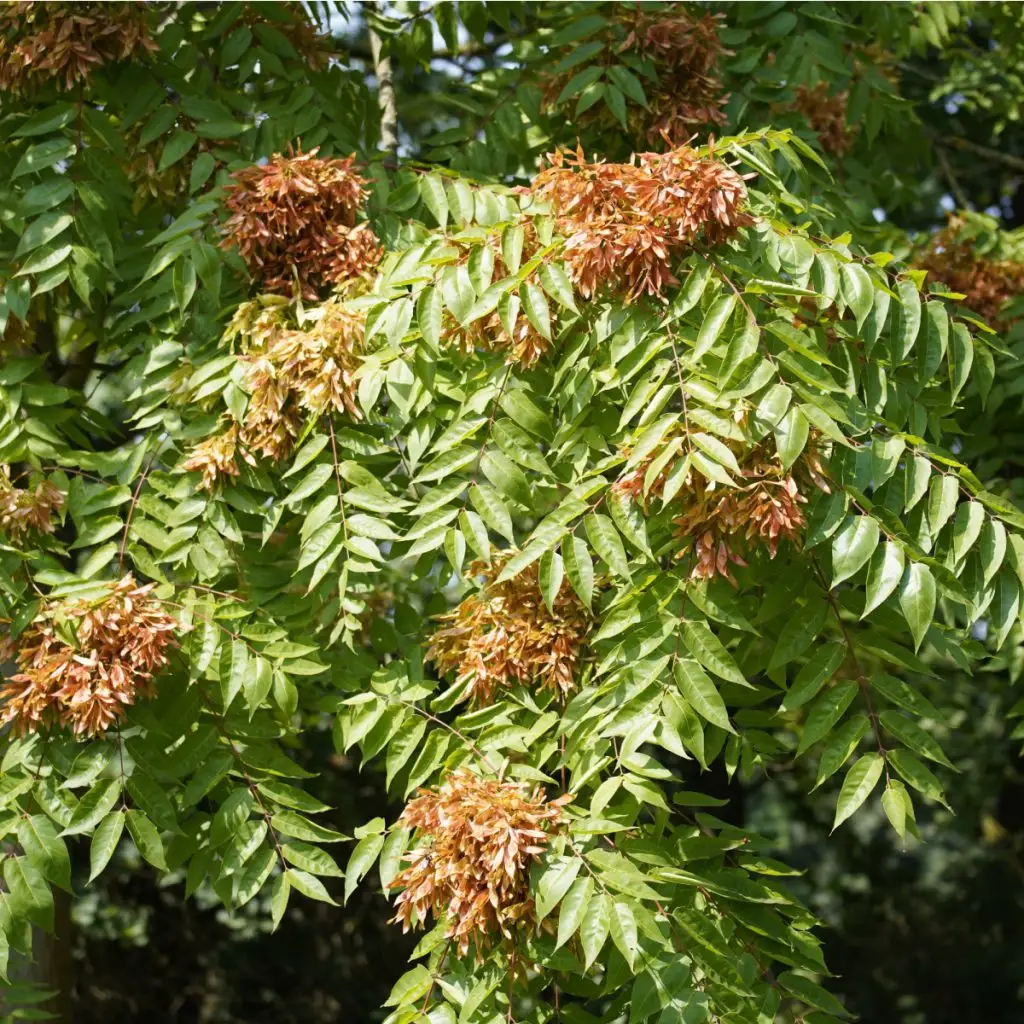
It grew thick and fast, and it seemed like every time we looked around, more shoots were coming up from the ground. Over the years, we have been slowly removing it one section at a time, and it has been a long battle.
But eliminating Tree of Heaven is incredibly important — not just for the health of our property, but for the environment as a whole. To understand why Tree of Heaven needs to go, it helps to know how it got here in the first place, and why it continues to spread so aggressively today.
The Dangers Of Tree Of Heaven
How Tree Of Heaven Got Here
Tree of Heaven (it’s official name is Ailanthus) is not native to the United States. It originally comes from China. It was brought into the country in the late 1700s as an ornamental tree because it could grow just about anywhere. And that remains one of the biggest problems – it grows too well.
The tree became especially popular in the early 1900s when it was used to help reforest areas that had been damaged by heavy mining. In old coal mine regions (like ours), the soil was often poor, acidic, and rocky. Most trees could not survive in those harsh conditions. But the dangerous Tree of Heaven has no issue at all. It can root easily in broken ground and start growing fast.
On the surface, it sounded like a great solution. People thought they had found a tree that could fix damaged land. But sadly, they did not realize how dangerous the Tree of Heaven would become once it spread into the natural environment. It didn’t just help restore land – it quickly began taking over everything in its path.
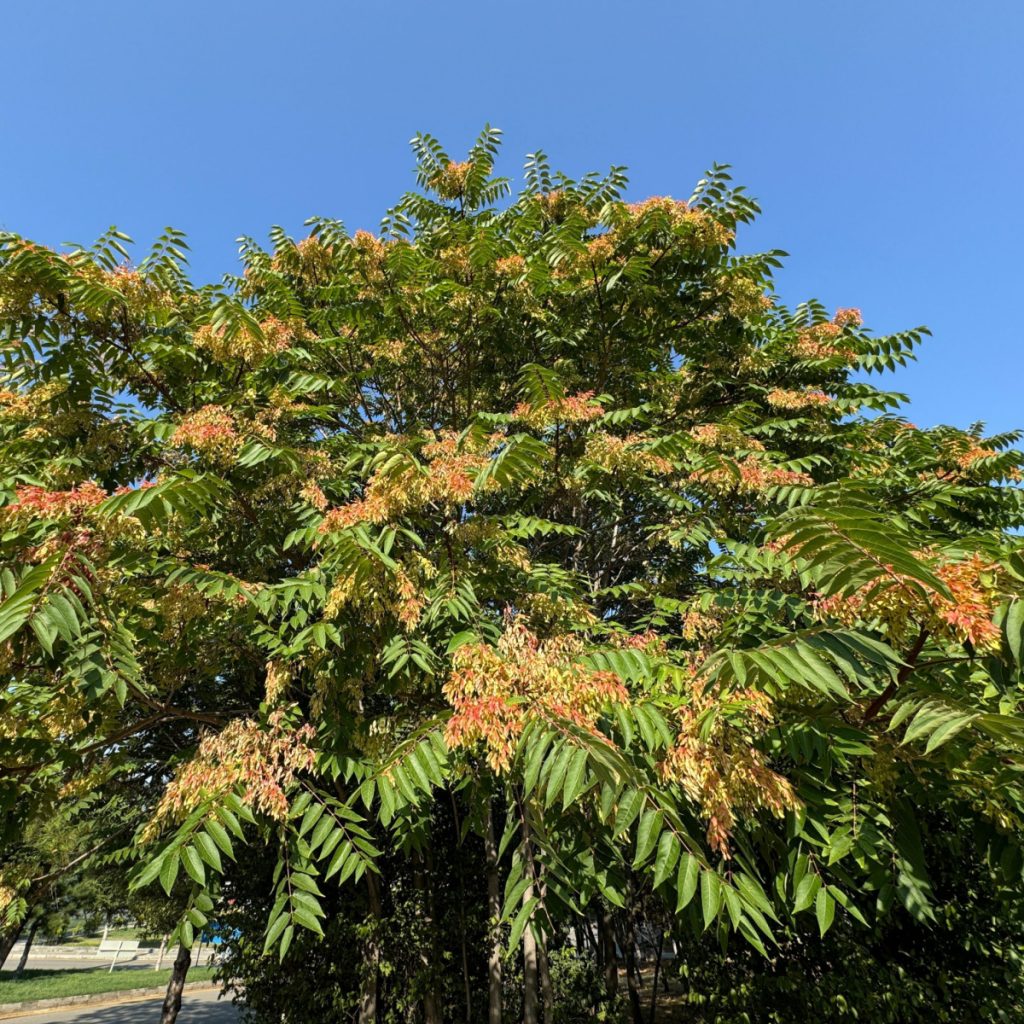
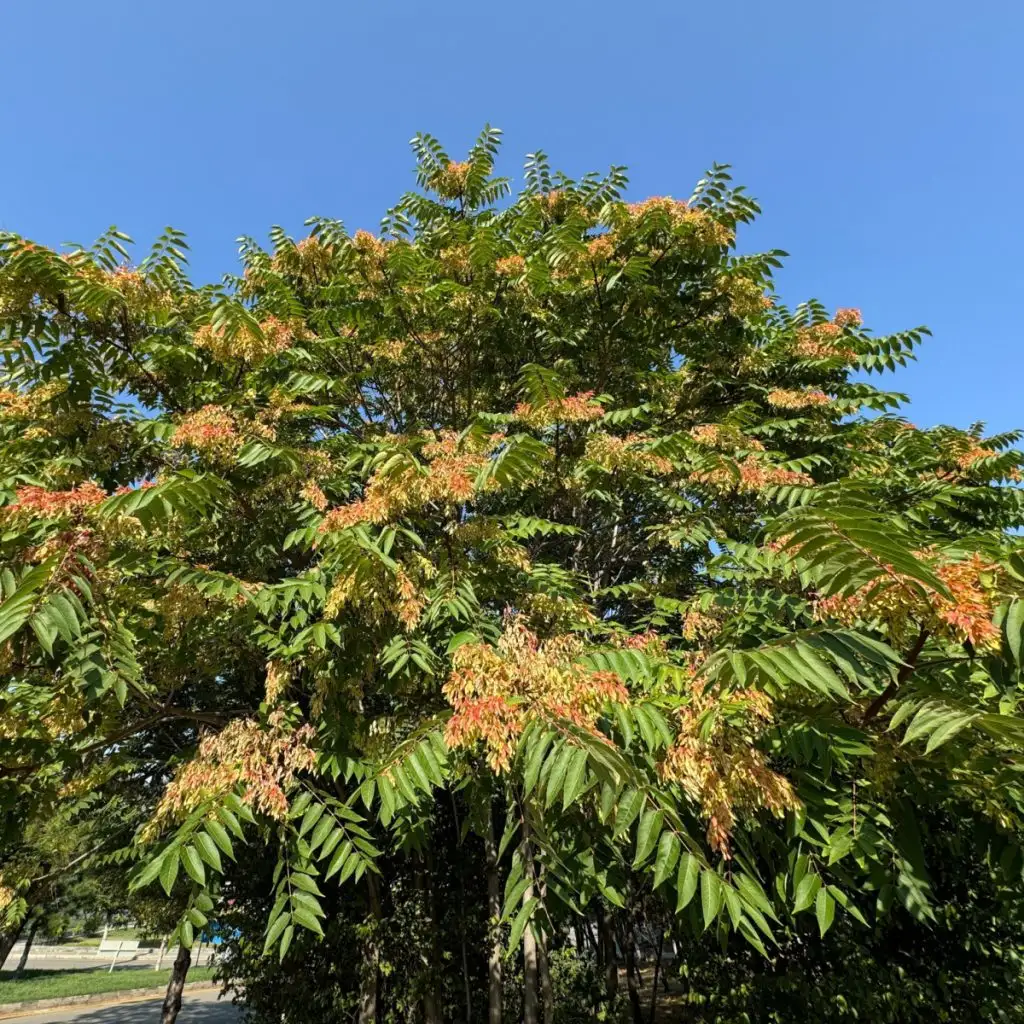
A Fast And Aggressive Grower
Tree of Heaven does not just grow fast — it grows extremely fast. Seedlings can grow several feet in a single season. It spreads by seeds that blow easily in the wind. A single female tree can produce tens of thousands of seeds per year.
Even worse, it spreads from its roots too. When the tree is cut down or stressed, the root system sends up new shoots everywhere to replace it. This ability to spread underground is what makes Tree of Heaven so dangerous and difficult to eliminate.
If you cut one tree down, you will often see dozens of new shoots appear within weeks – all connected to the original root system. Each shoot grows into another tree, and the cycle continues.
We saw this exact problem at the farm. The more we tried to clear out the biggest trees, the more small shoots we found popping up in fields and grassy areas. It felt like the tree was fighting back. It takes repeated action and persistence to keep it from taking over again.
Crowding Out Native Trees And Plants
Tree of Heaven does major harm to the surrounding landscape. One of the biggest dangers is how it crowds out and kills native vegetation. The roots release chemicals into the soil that stop other plants from growing nearby. It gives Tree of Heaven a huge advantage over everything else around it.


When this tree starts taking over native tree seedlings struggle to survive. Wildflowers and ground cover plants disappear as well. Over time, a landscape that once had many types of plants and trees becomes a thick, unbreakable and dangerous forest of Tree of Heaven.
Not only does it ruin natural diversity, but it creates an unhealthy environment for all kinds of animals. At the farm, we noticed how the areas with the most Tree of Heaven had very little growing underneath. But unfortunately, it gets even worse – the tree also attracts pests!
A Host For Stink Bugs & The Spotted Lanternfly
Another major danger and a growing concern across the United States is that Tree of Heaven is a preferred host plant for extremely destructive and dangerous insect pests. Two of the biggest troublemakers are stink bugs and spotted lanternflies.
Both pests have caused millions of dollars in damage to crops and trees. Tree of Heaven offers them a perfect place to feed, breed, and multiply. By having Tree of Heaven around, we are basically welcoming these insects and giving them a home base to grow their population.
The stink bug is bad enough, but the Spotted Lanternfly is far worse. This invasive insect attacks orchard trees, grapevines, hops plants, and hardwood species. It feeds on sap, leaving trees weak and slowly killing them. Farms and forests are already losing trees because of it. And where do lanternflies like to lay their eggs and live? On the dangerous Tree of Heaven!
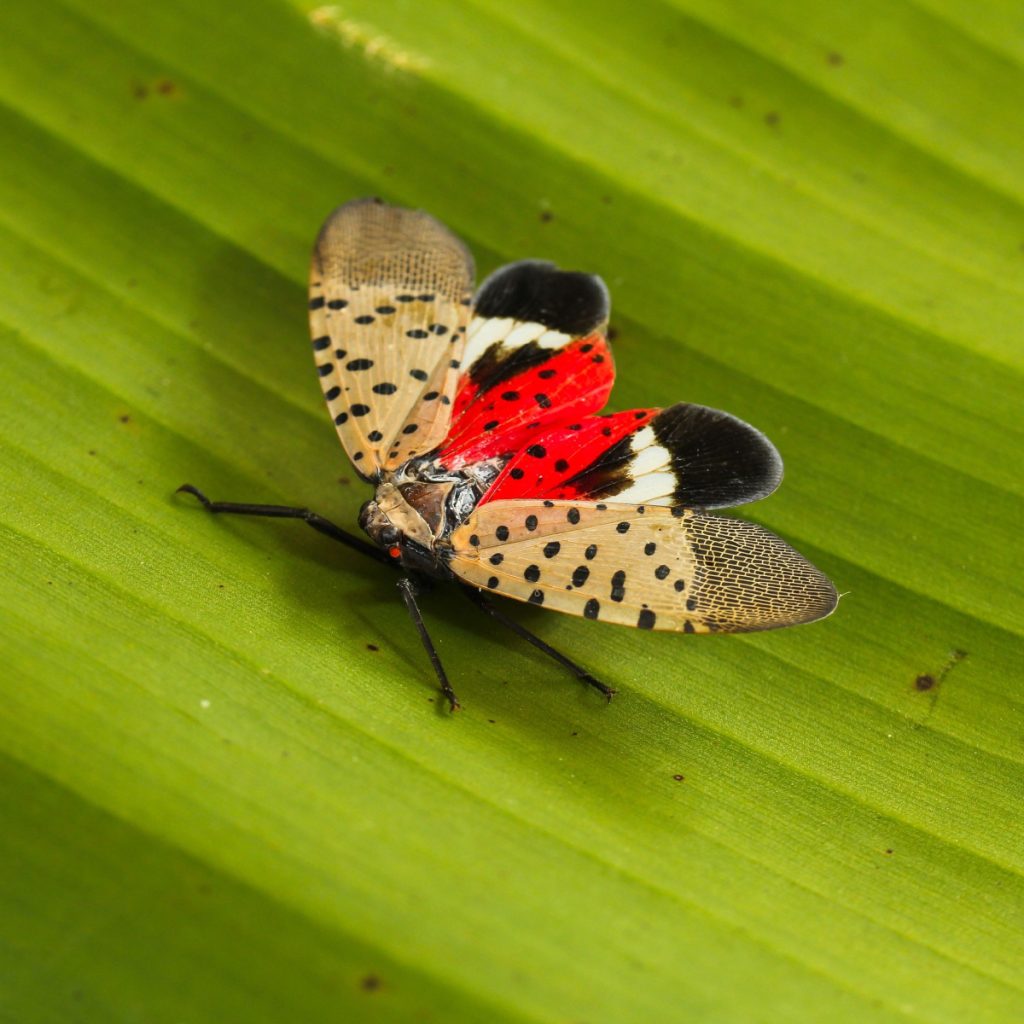
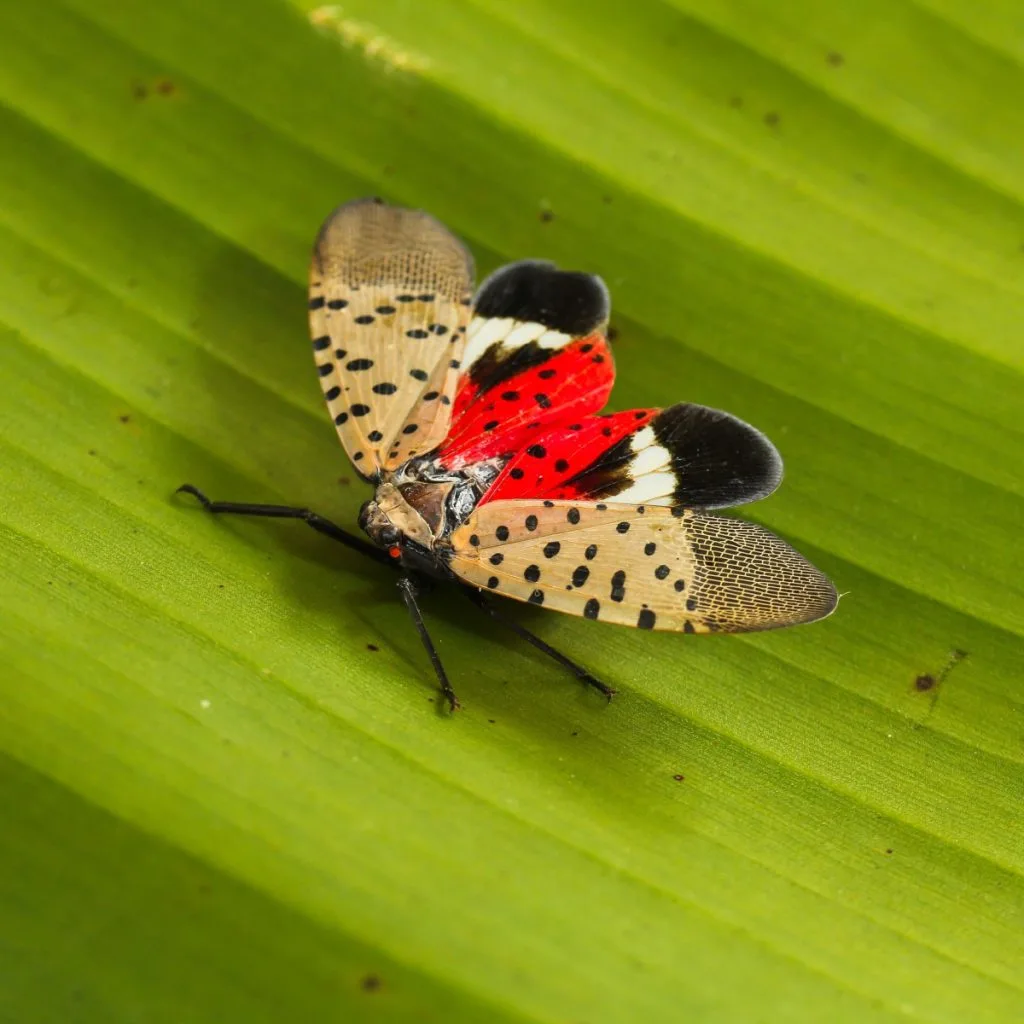
This connection alone is reason enough to remove the tree wherever possible. If you can eliminate the host plant, it helps reduce the spread of the insects. Unfortunately, because Tree of Heaven grows in so many places, controlling these pests has become extremely difficult.
Why It’s So Hard To Kill Tree Of Heaven
Tree of Heaven does not go away easily. As mentioned before, if you simply cut it down, the roots respond by sending up new shoots everywhere. It turns a single trunk into an entire colony.
On our farm, we have treated and removed many large Tree of Heaven stands, but we are still finding shoots young and small in places we have already cleared. It’s a constant job. Anytime the roots sense weakness, they try to grow more trees.
The work continues year after year – but it’s necessary work. When we cut off a new shoot or a tree, we drill into the middle of it and pour in a little 40% horticultural vinegar. It works to kill the plant the same way it does for thistles. See: How To Kill Thistles For Good – The Simple Trick That Will Eliminate Thistles Forever!
The vinegar really is a great option to take out these trees with a more natural approach than man-made chemical options that have their own issues. Affiliate Link: Horticultural Vinegar.


Spotting The Tree of Heaven
Knowing what Tree of Heaven looks like is the first step in eliminating it. It is often confused with walnut, sumac, or hickory because it has large compound leaves. But there are some clear signs that make Tree of Heaven easy to spot:
Leaves have many leaflets (up to 40 per leaf) and the leaflets each have one or two bumps near the base. In addition, the bark on young trees is smooth and light gray. Female trees produce papery seeds in large clusters that turn brown in fall. These seeds spread far and fast with just a little wind.
But most of all, when crushed, the leaves and bark smell like burnt rubber or strong chemicals. That unpleasant smell is one of the best clues — and one reason the tree is not popular once people get to know it.
At the farm, it has been a challenge, but we stay with it. We replace the area with natural grasses, young hardwood trees, or open space for more diverse plant life. Slowly but surely, we are winning the battle!
Here is to helping eliminate the dangerous Tree of Heaven – and helping nature in the process! Happy Gardening, Jim
Old World Garden Farm
Jim and Mary Competti have been writing gardening, DIY and recipe articles and books for over 15 years from their 46 acre Ohio farm. The two are frequent speakers on all things gardening and love to travel in their spare time.
As always, feel free to email us at thefarm@owgarden.com with comments, questions, or to simply say hello! You can sign up for our free email list in the subscribe now box in the middle of this article. Follow us on Facebook here : OWG Facebook. This article may contain affiliate links.


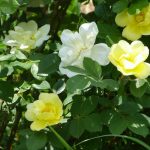










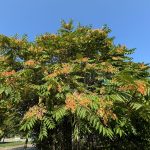
Skyward spear, a thief of light,
Ailanthus, fierce, a blight.
Roots run deep, choking life,
Erase its reign, reclaim the strife.
With gentle care, roots released,
New shoots rise where sunlight eased.
A hopeful
Beware the tree of heaven’s shadowed might,
Its invasive roots, a blight.
Tear it down, let light ignite,
And reclaim the earth’s pure sight.
Your bold words bloom, a gentle plea—
to ease its grip and set the earth free.
Earth and light reclaim their rights, quietly.<|im_end|>
Beneath its wings of green, a silent foe,
The Tree of Heaven chokes the land below.
Uproot its grasp, let native life grow.
“Nature’s song fades where it spreads its might,
Let roots reclaim the earth, bathed in native light.”
“Paradise’s specter, a tree of doom. Enticing beauty, deadly sting. Root of destruction, seed of fear. Cut it down, and calm draw near.”
Fierce roots, fierce dreams—what shadows entwining?
Let tempest petals fall, and stillness intertwining.